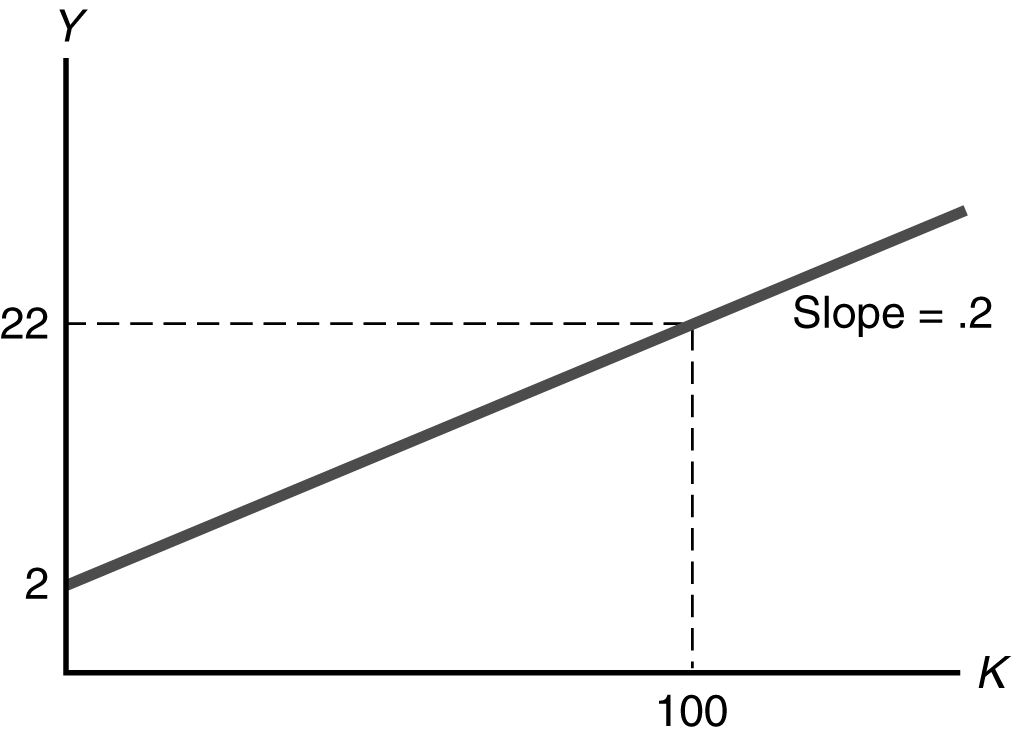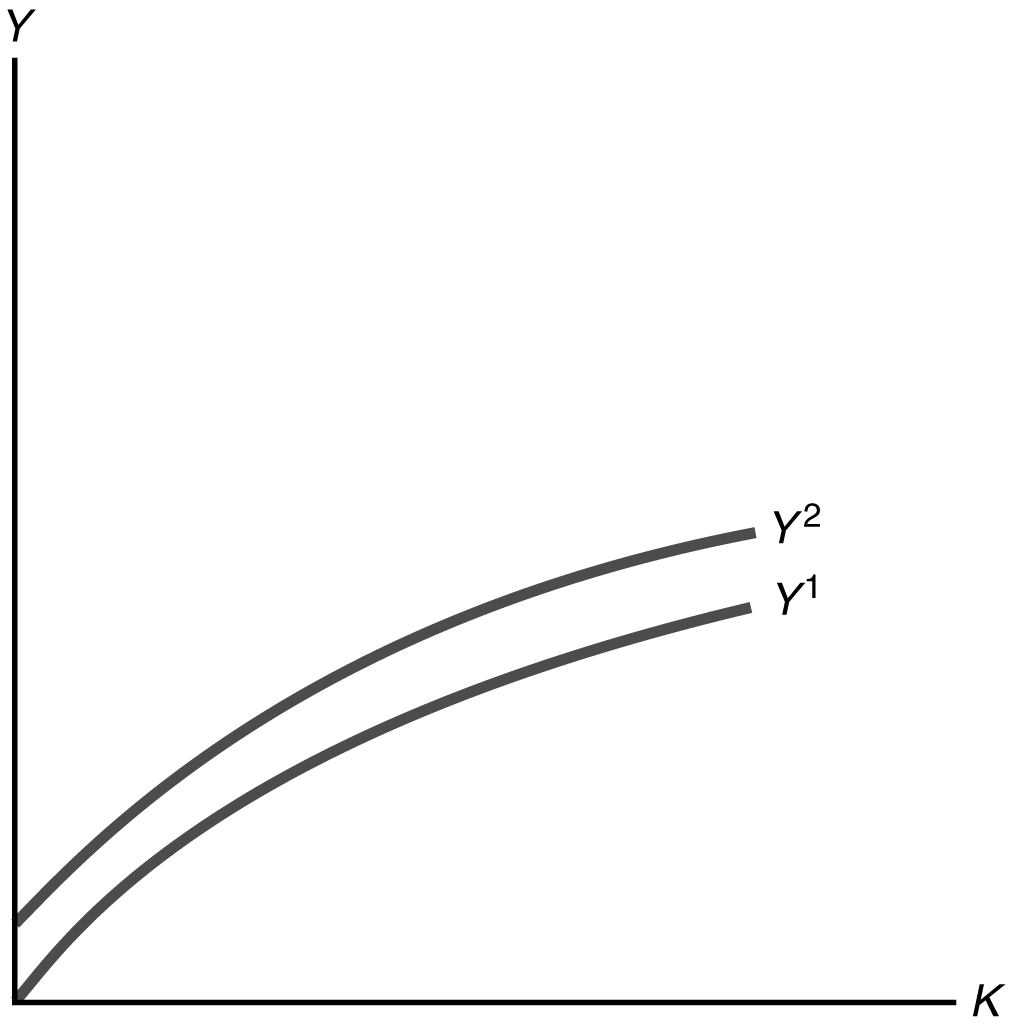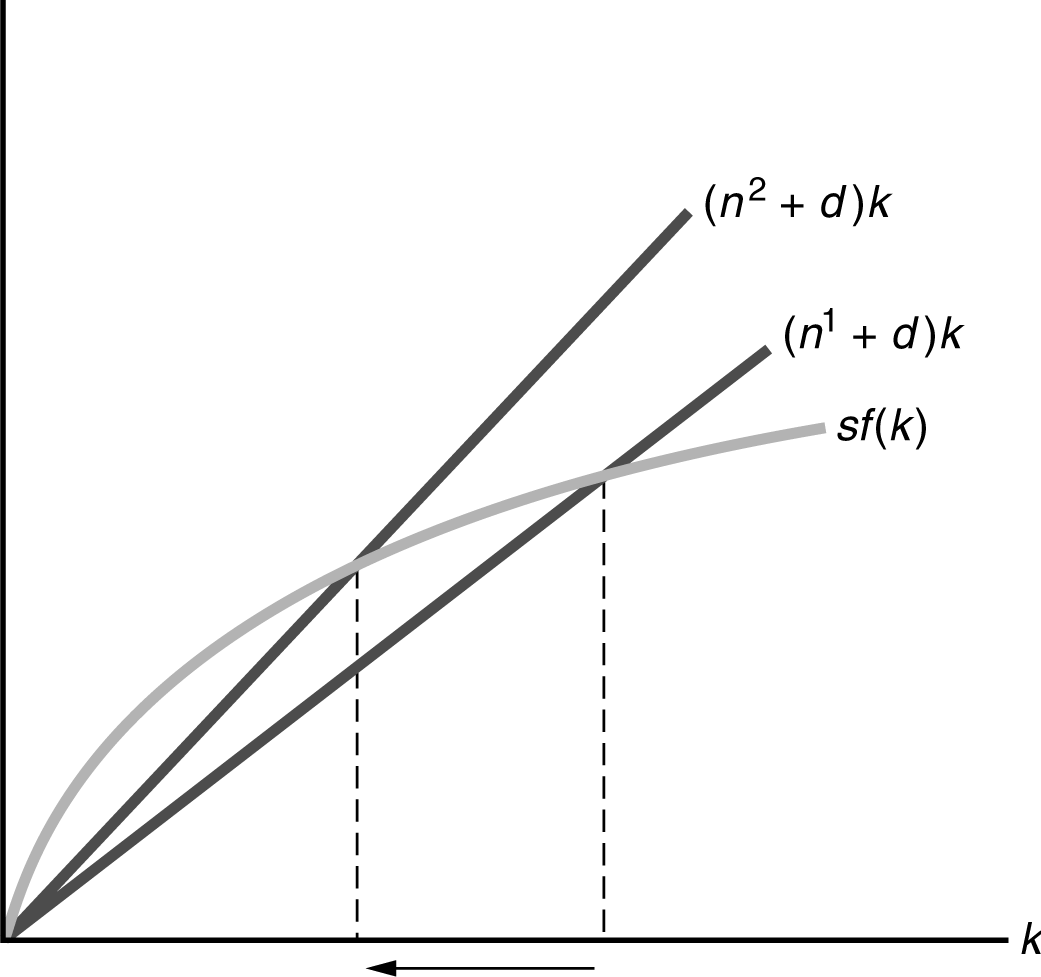2. (a) The MPK is 0.2, because for each additional unit of capital, output increases by 0.2 units. The slope of the production function line is 0.2. There is no diminishing marginal productivity of capital in this case, because the MPK is the same regardless of the level of K. This can be seen in figure because the production function is a straight line.

(b) When N is 100, output is Y
0.2(100 100.5) 22. When N is 110, Y is 22.0976. So the MPN for raising N from 100 to 110 is (22.0976 – 22)/10 0.00976. When N is 120, Y is 22.1909. So the MPN for raising N from 110 to 120 is (22.1909 – 22.0976)/10 0.00933. This shows diminishing marginal productivity of labor because the MPN is falling as N increases. In figure this is shown as a decline in the slope of the production function as N increases.






